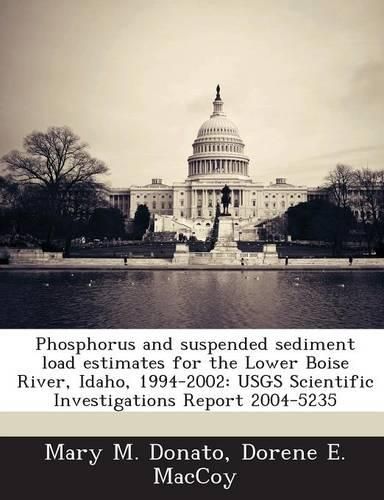Readings Newsletter
Become a Readings Member to make your shopping experience even easier.
Sign in or sign up for free!
You’re not far away from qualifying for FREE standard shipping within Australia
You’ve qualified for FREE standard shipping within Australia
The cart is loading…






The U.S. Geological Survey used LOADEST, newly developed load estimation software, to develop regression equations and estimate loads of total phosphorus (TP), dissolved orthophosphorus (OP), and suspended sediment (SS) from January 1994 through September 2002 at four sites on the lower Boise River: Boise River below Diversion Dam near Boise, Boise River at Glenwood Bridge at Boise, Boise River near Middleton, and Boise River near Parma. The objective was to help the Idaho Department of Environmental Quality develop and implement total maximum daily loads (TMDLs) by providing spatial and temporal resolution for phosphorus and sediment loads and enabling load estimates made by mass balance calculations to be refined and validated. Regression models for TP and OP generally were well fit on the basis of regression coefficients of determination (R2), but results varied in quality from site to site.
$9.00 standard shipping within Australia
FREE standard shipping within Australia for orders over $100.00
Express & International shipping calculated at checkout
The U.S. Geological Survey used LOADEST, newly developed load estimation software, to develop regression equations and estimate loads of total phosphorus (TP), dissolved orthophosphorus (OP), and suspended sediment (SS) from January 1994 through September 2002 at four sites on the lower Boise River: Boise River below Diversion Dam near Boise, Boise River at Glenwood Bridge at Boise, Boise River near Middleton, and Boise River near Parma. The objective was to help the Idaho Department of Environmental Quality develop and implement total maximum daily loads (TMDLs) by providing spatial and temporal resolution for phosphorus and sediment loads and enabling load estimates made by mass balance calculations to be refined and validated. Regression models for TP and OP generally were well fit on the basis of regression coefficients of determination (R2), but results varied in quality from site to site.